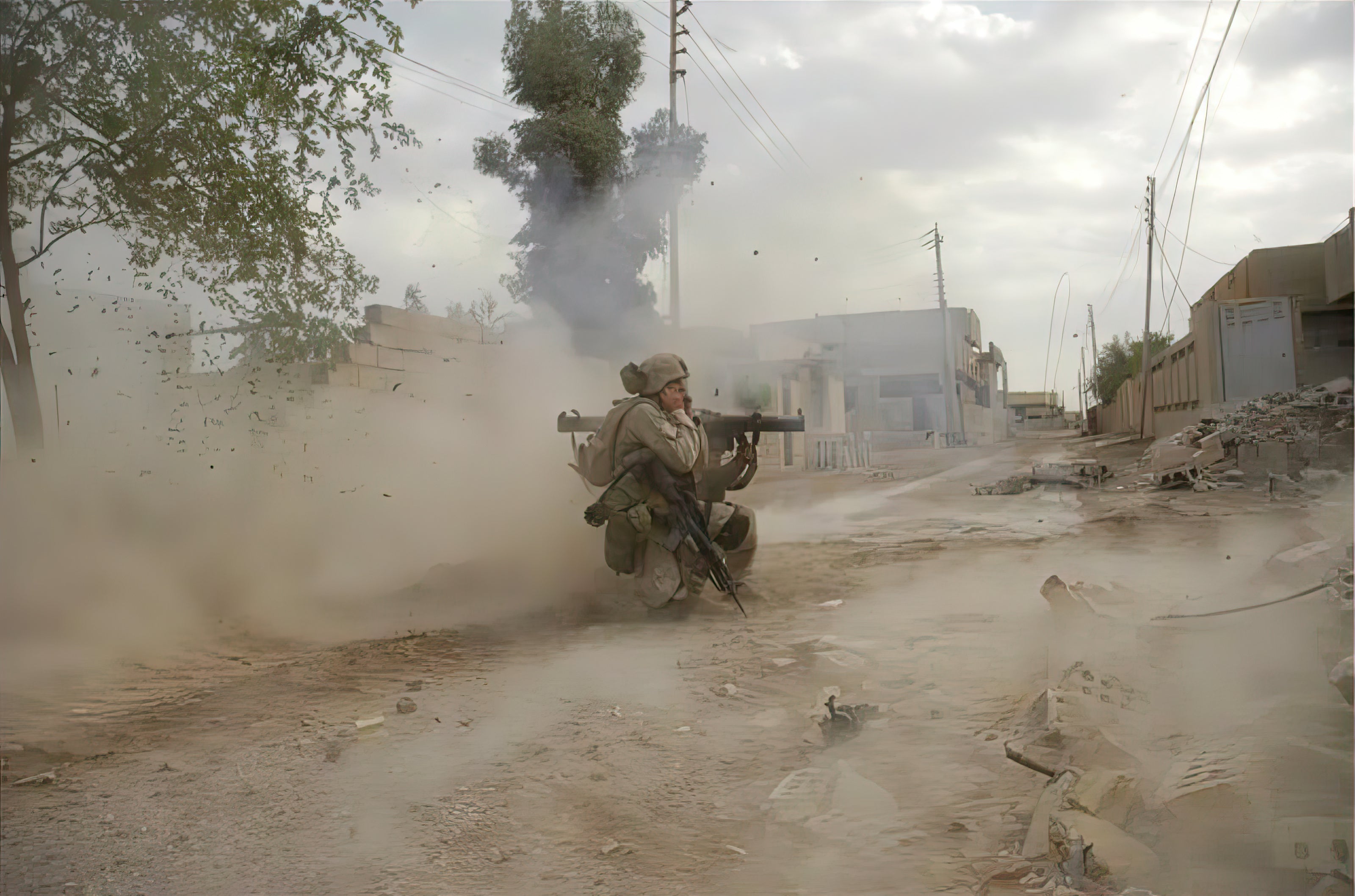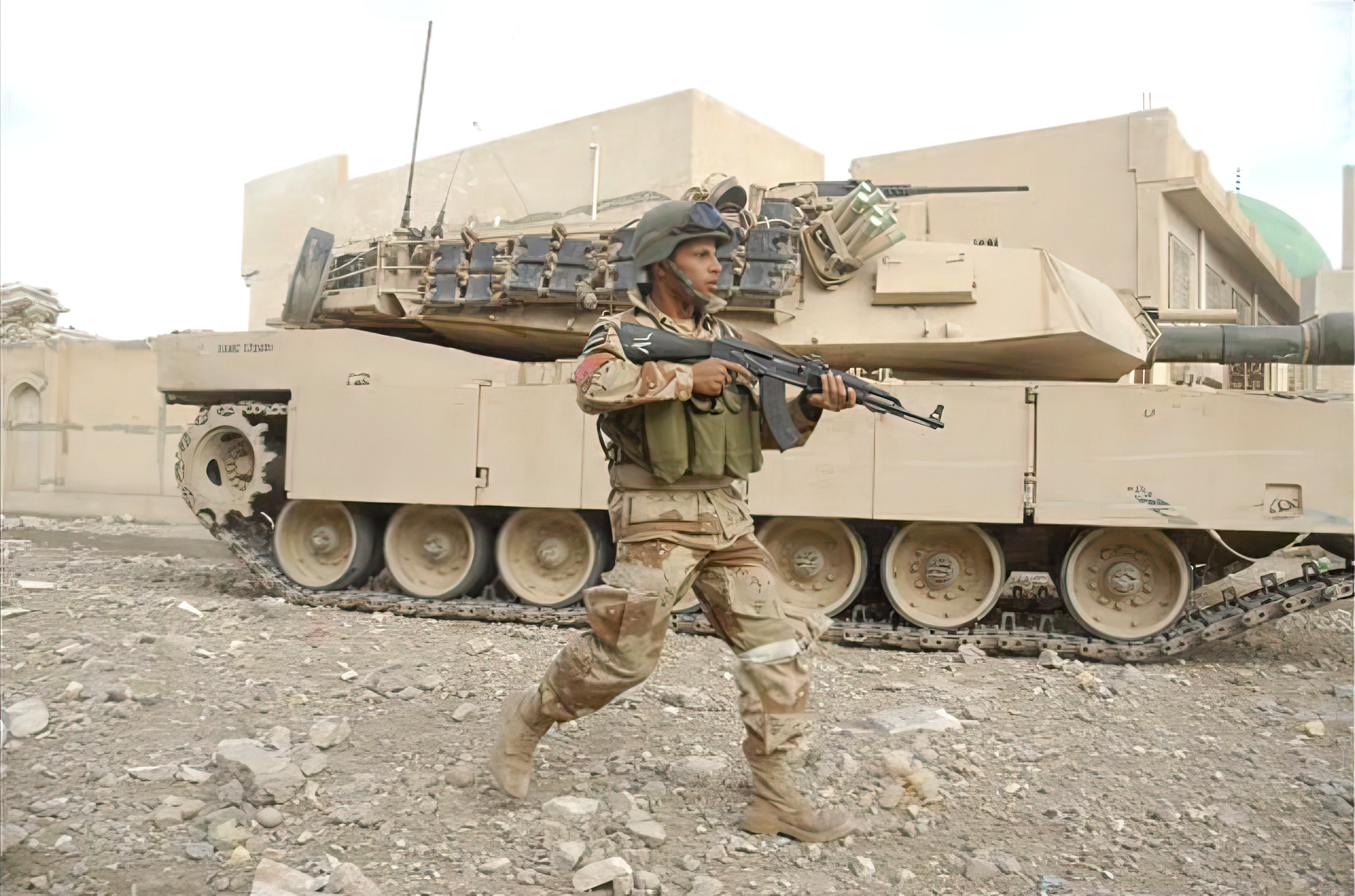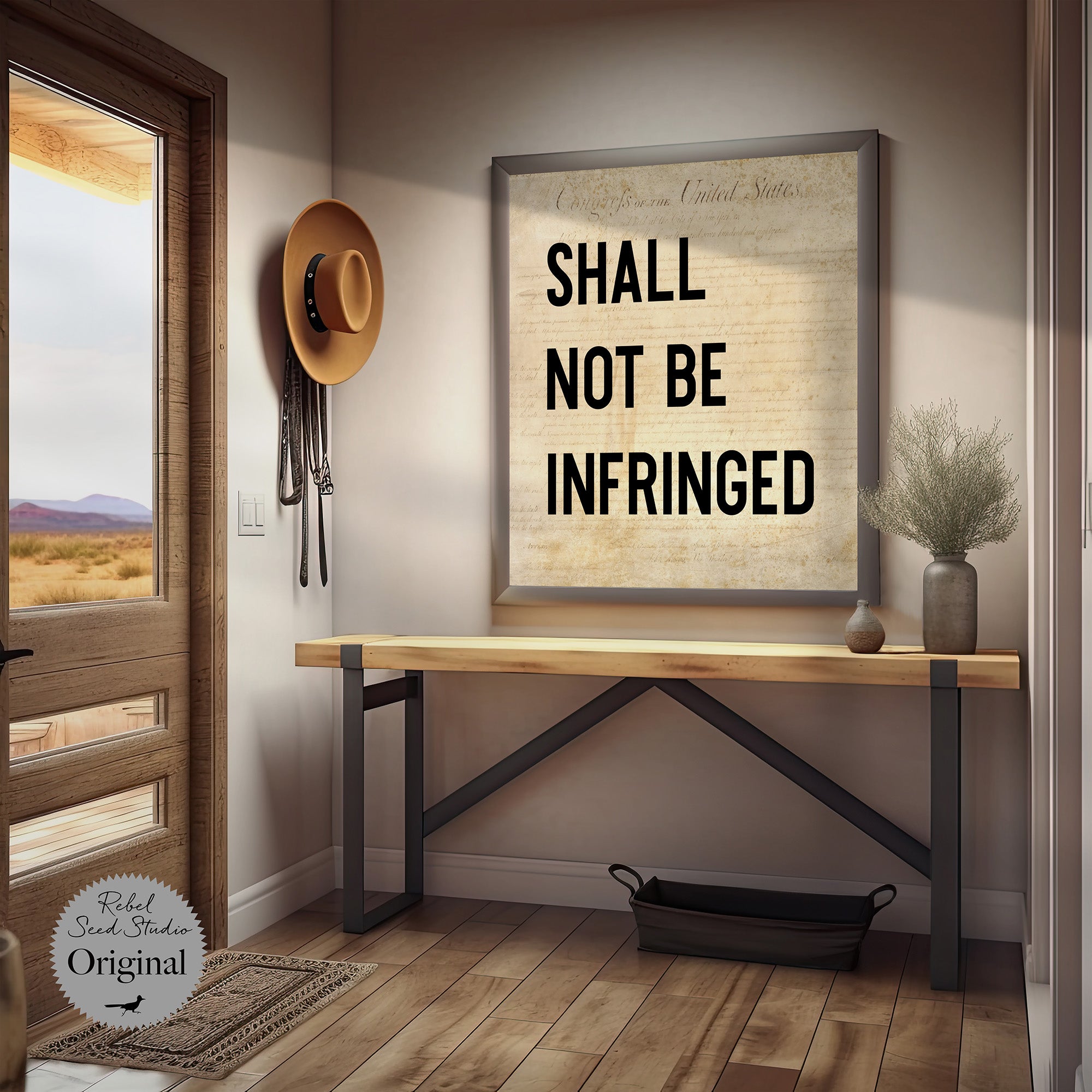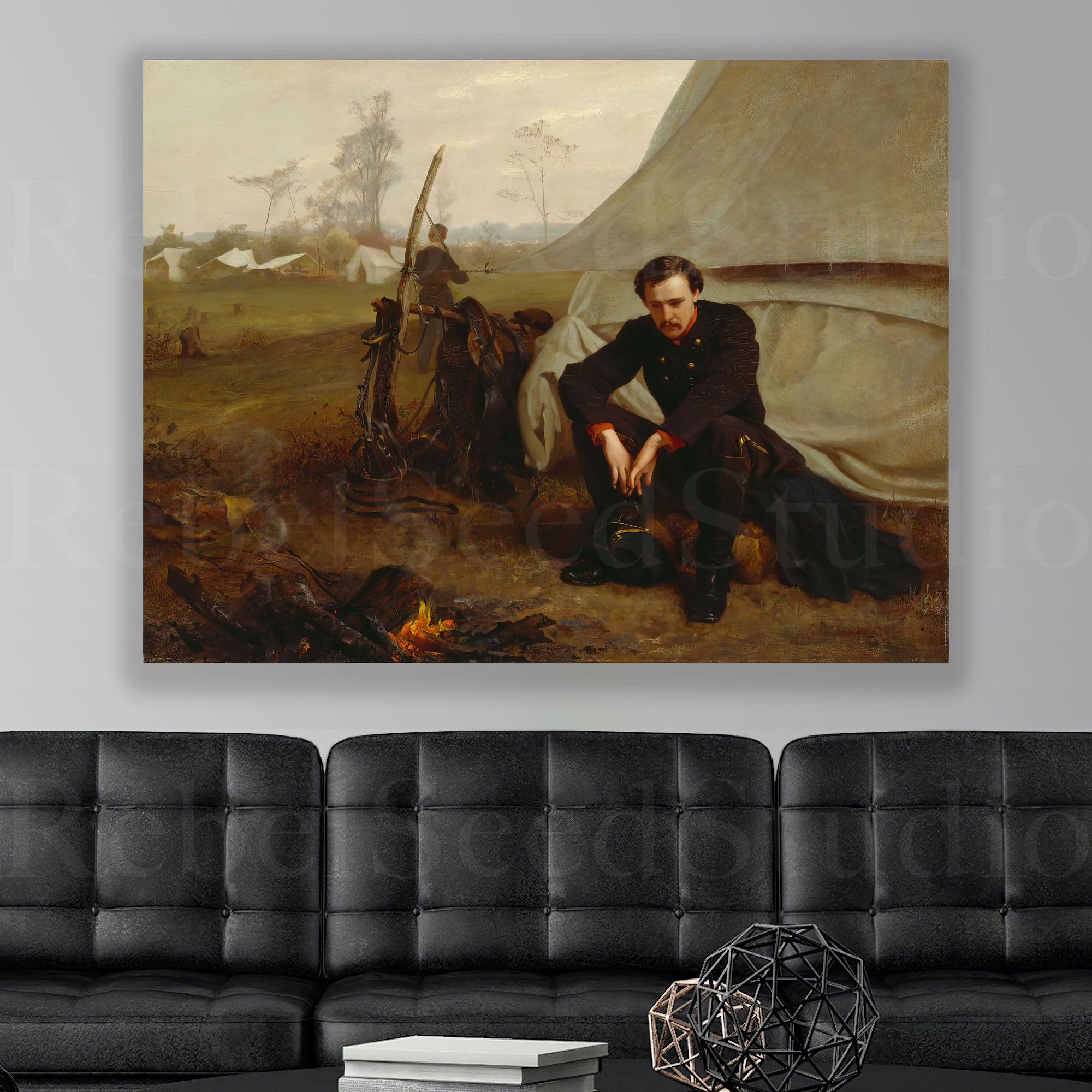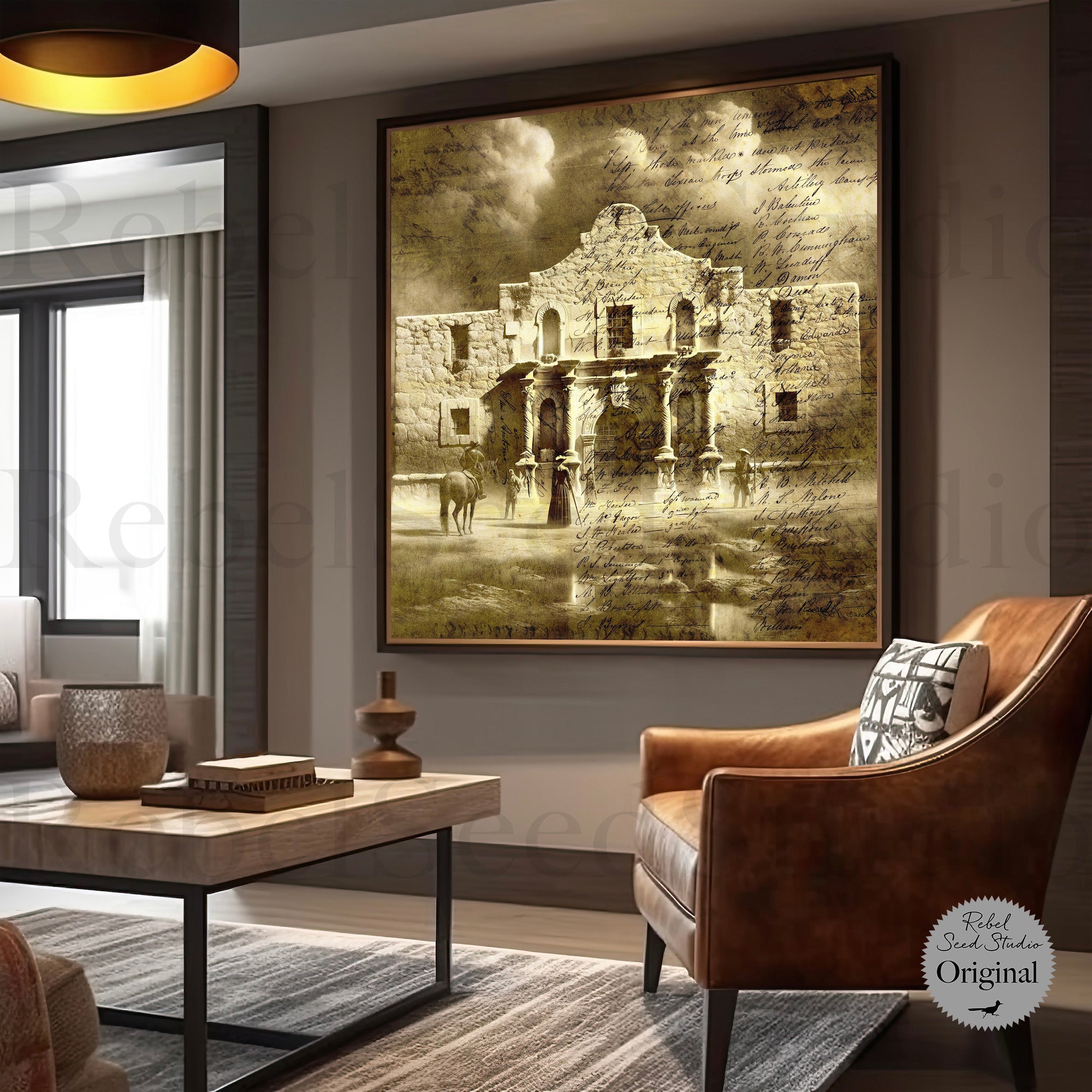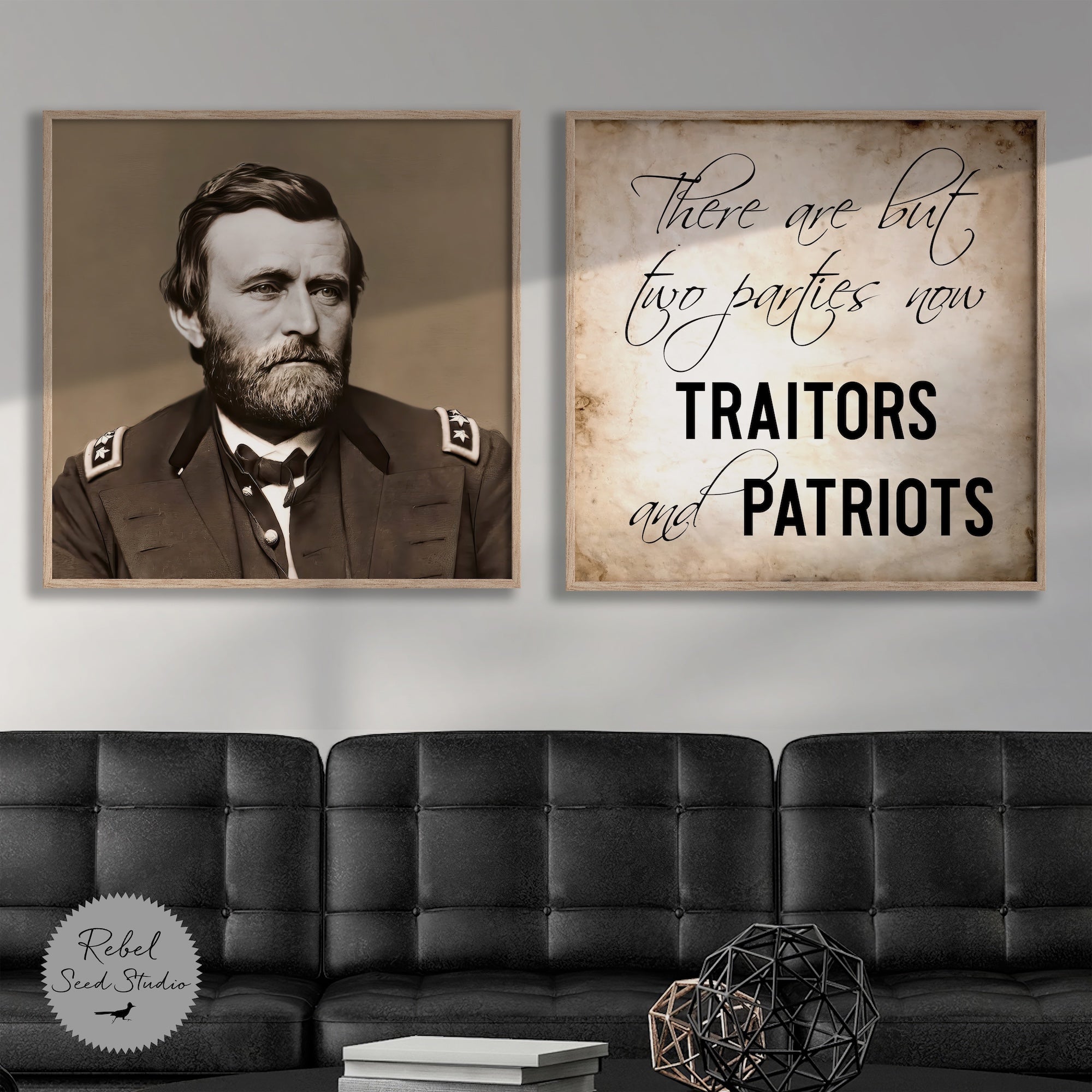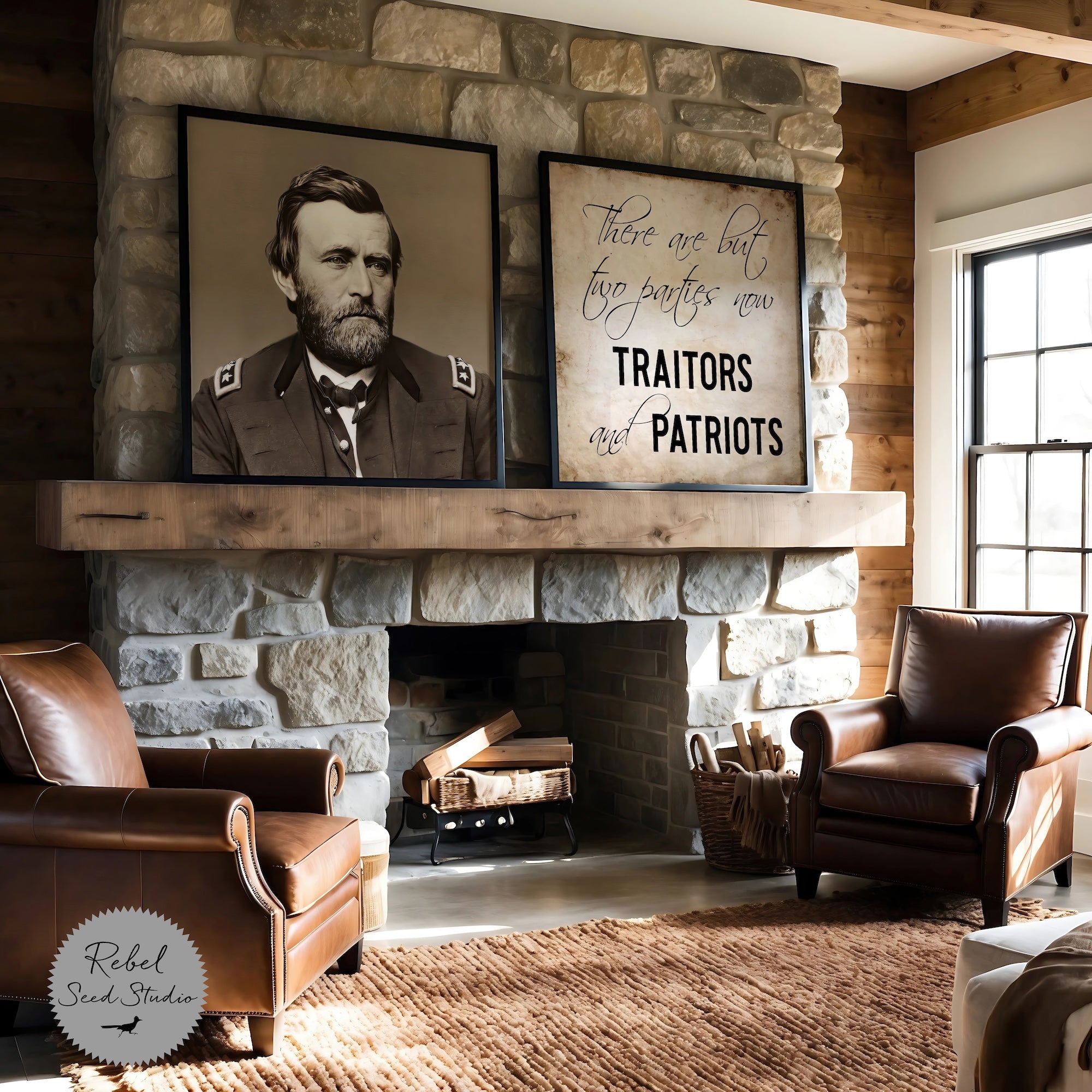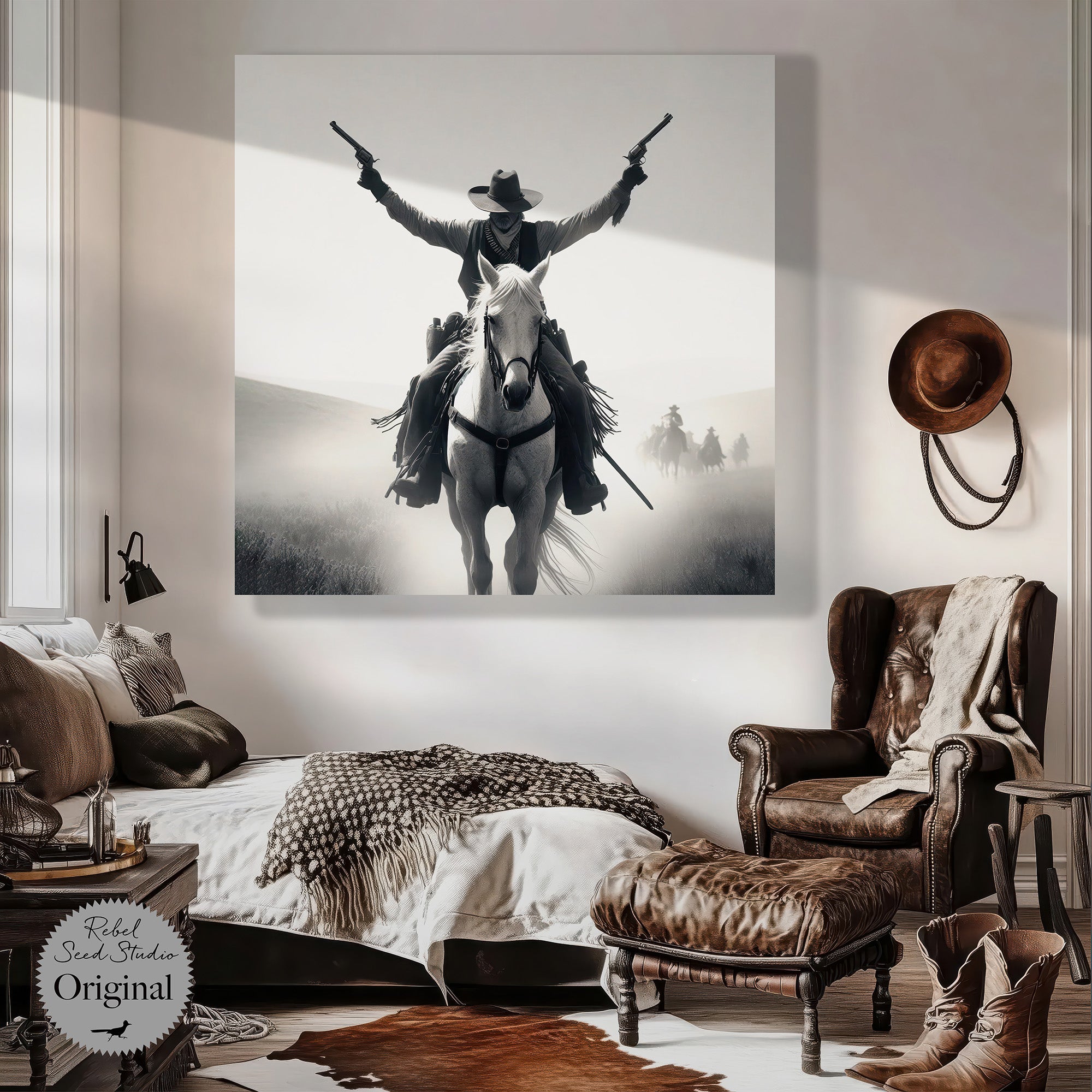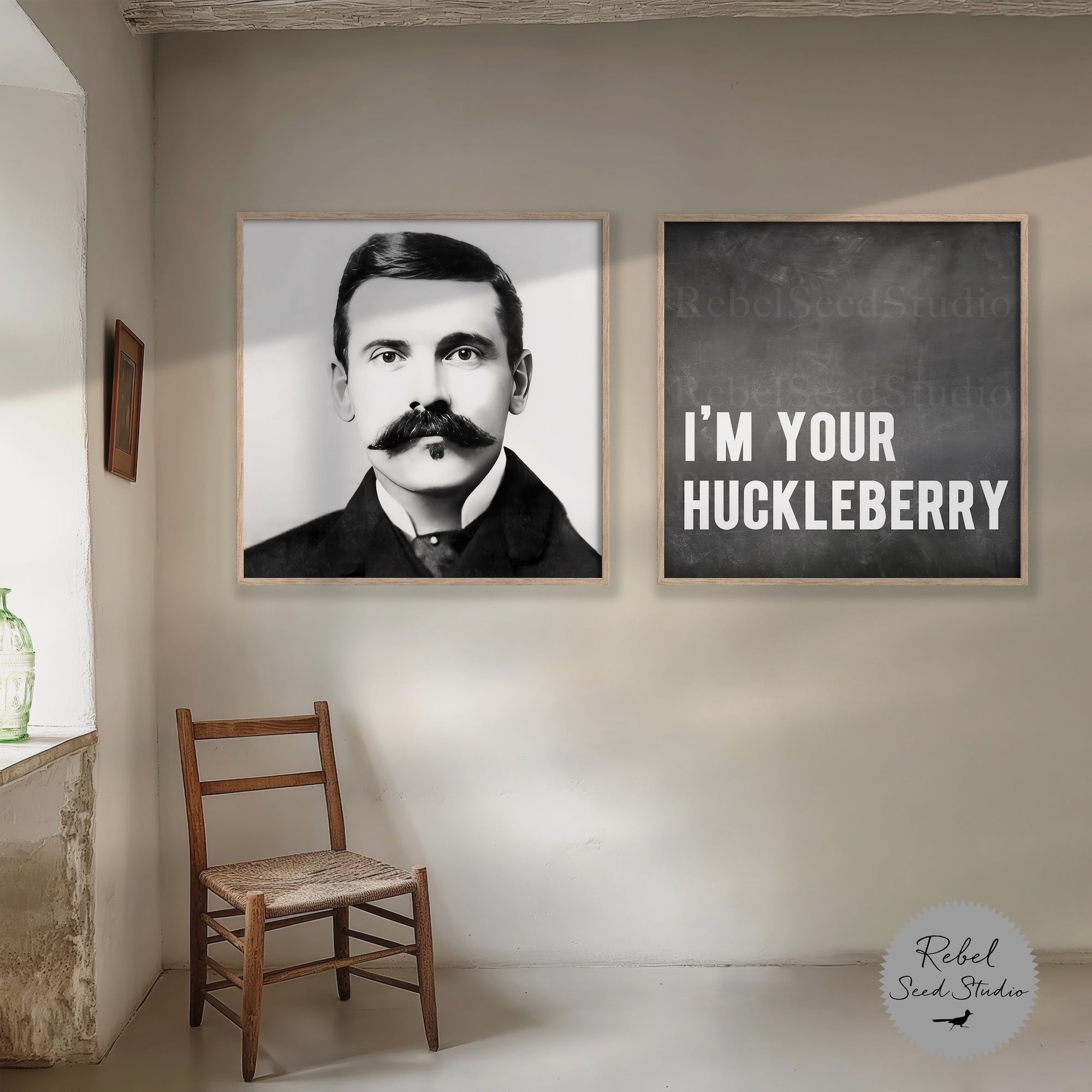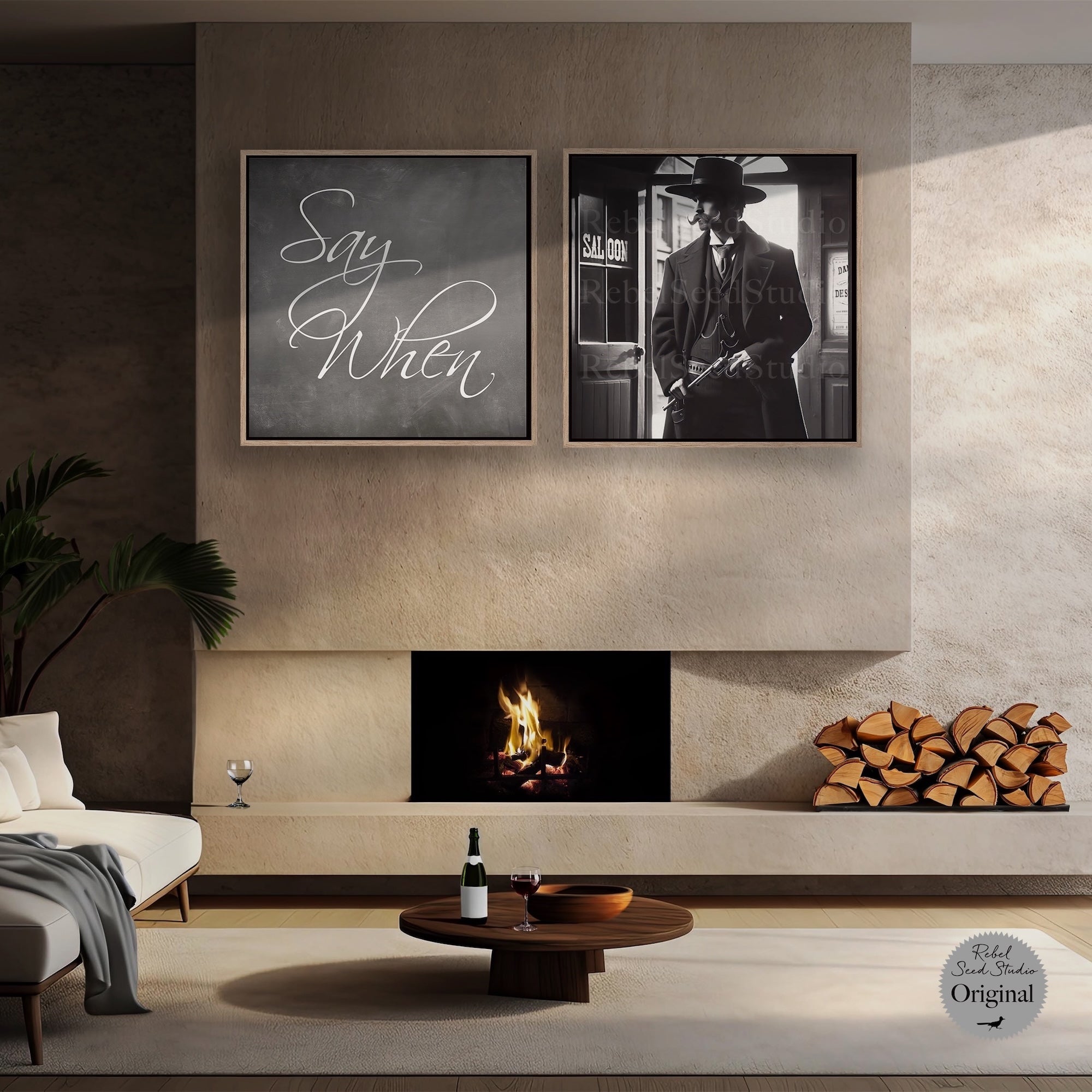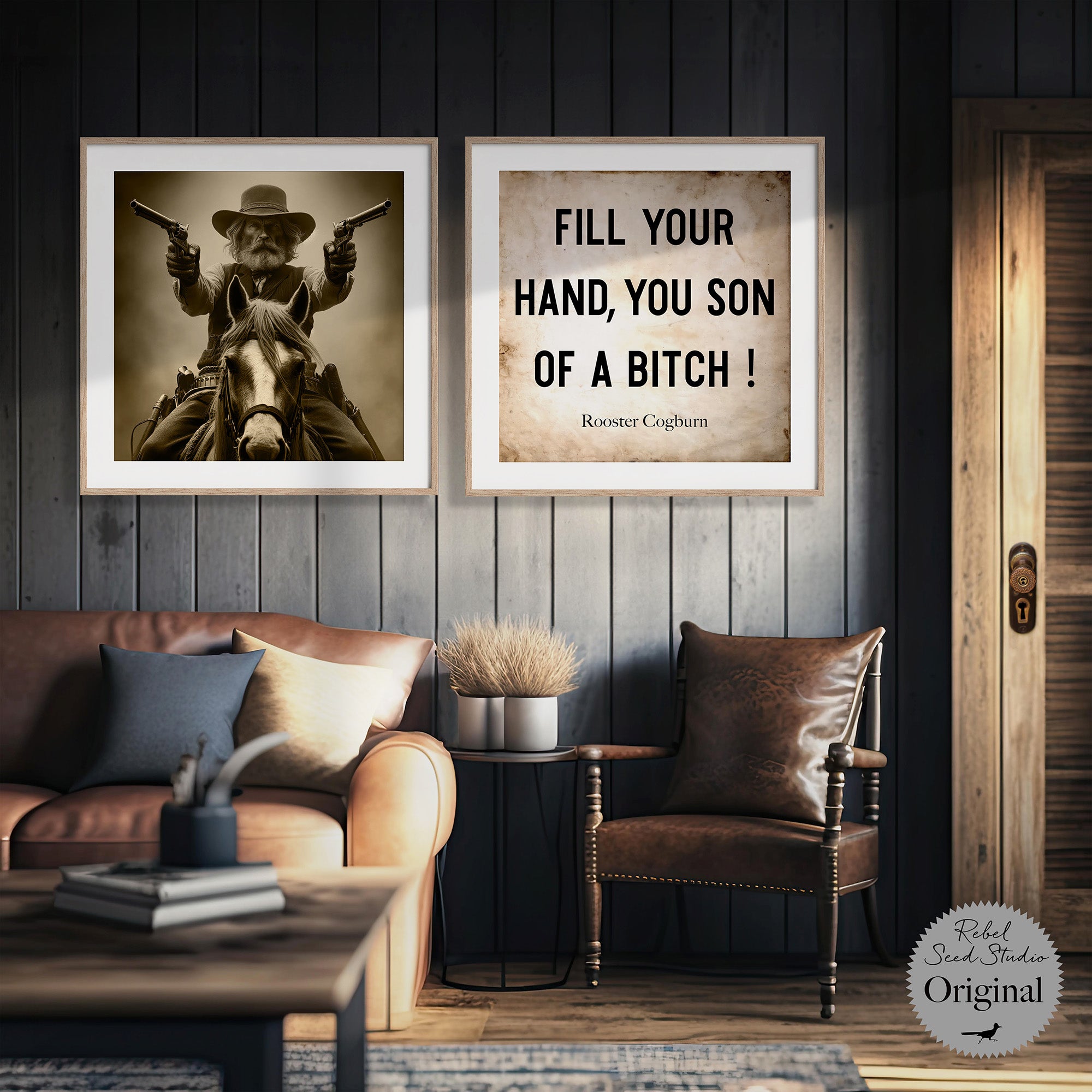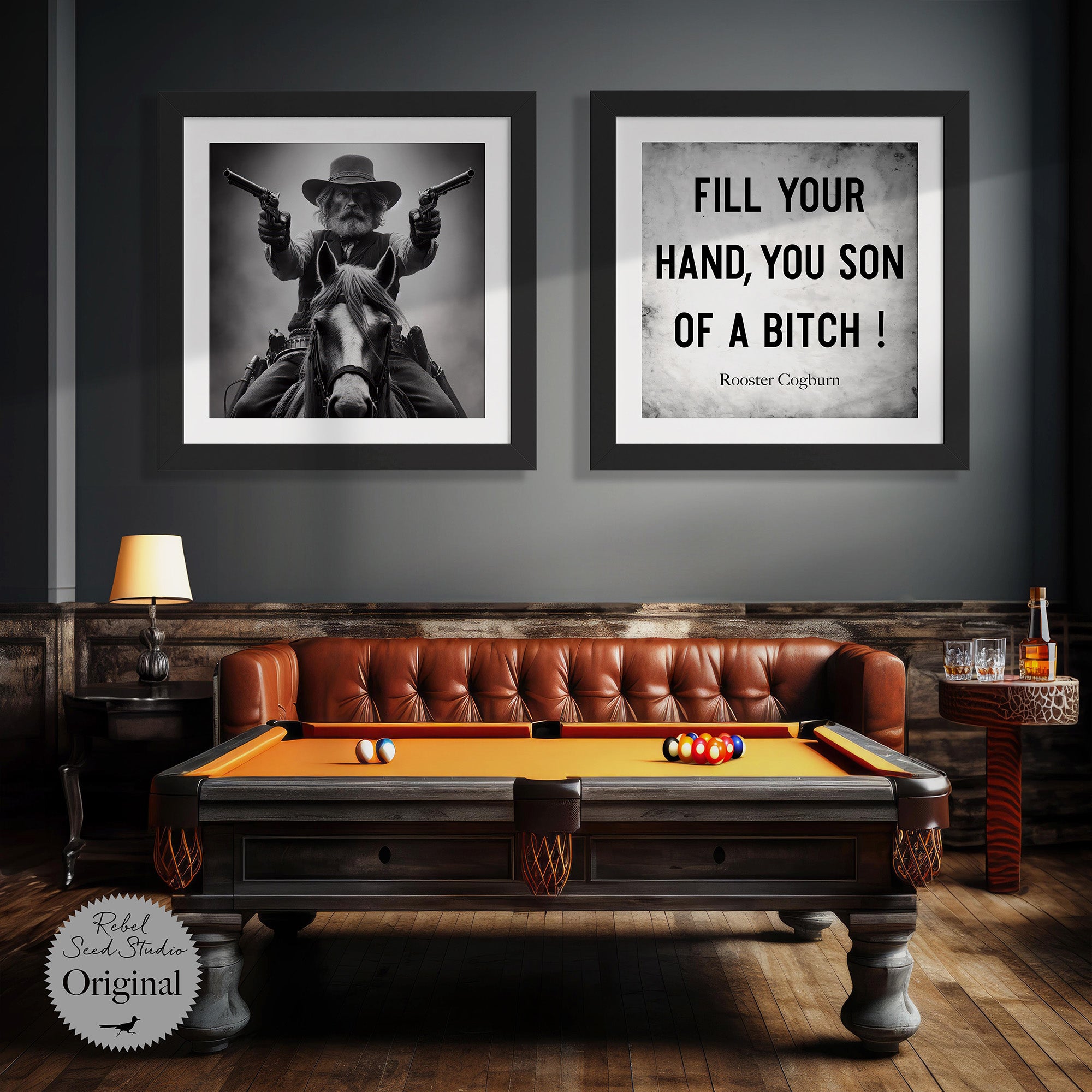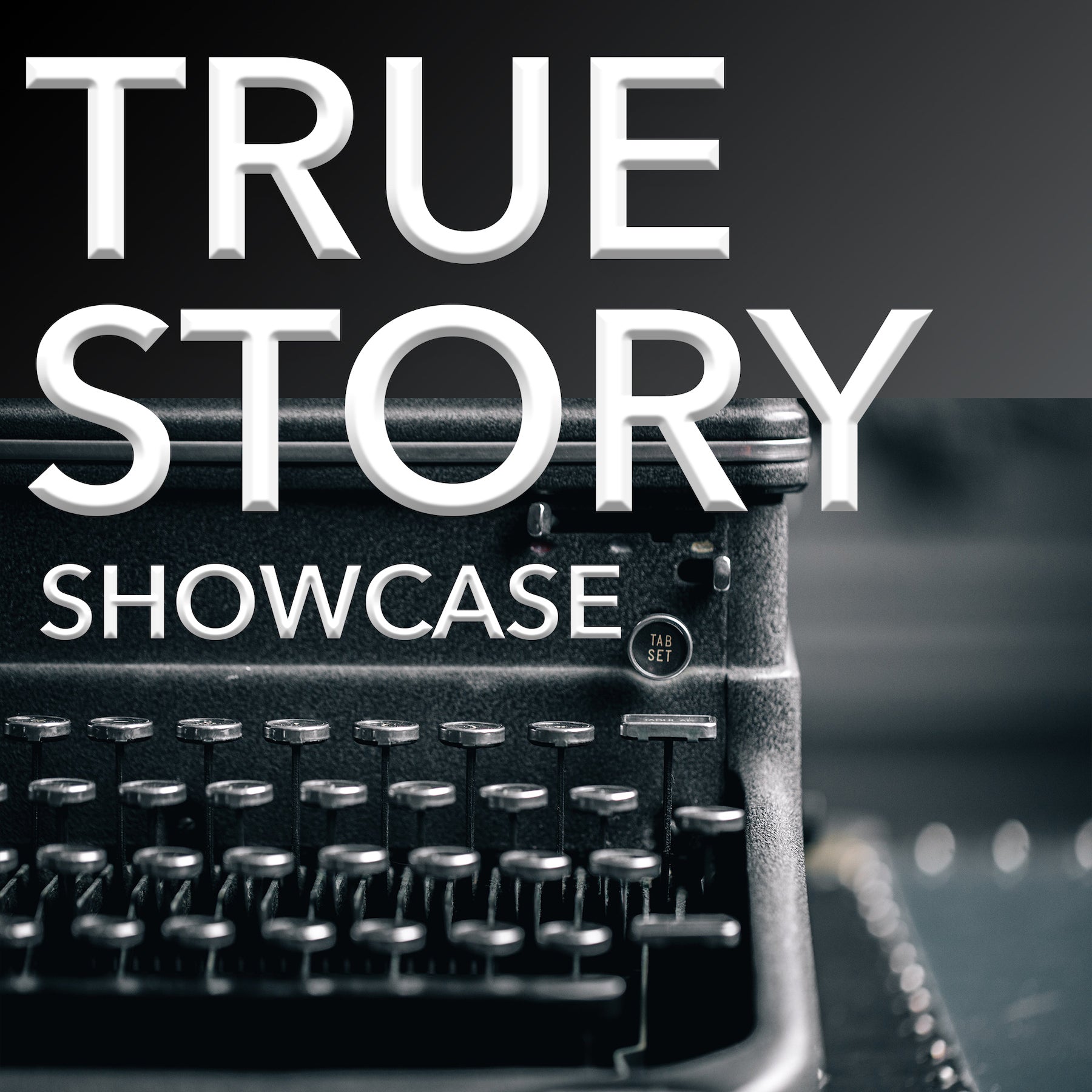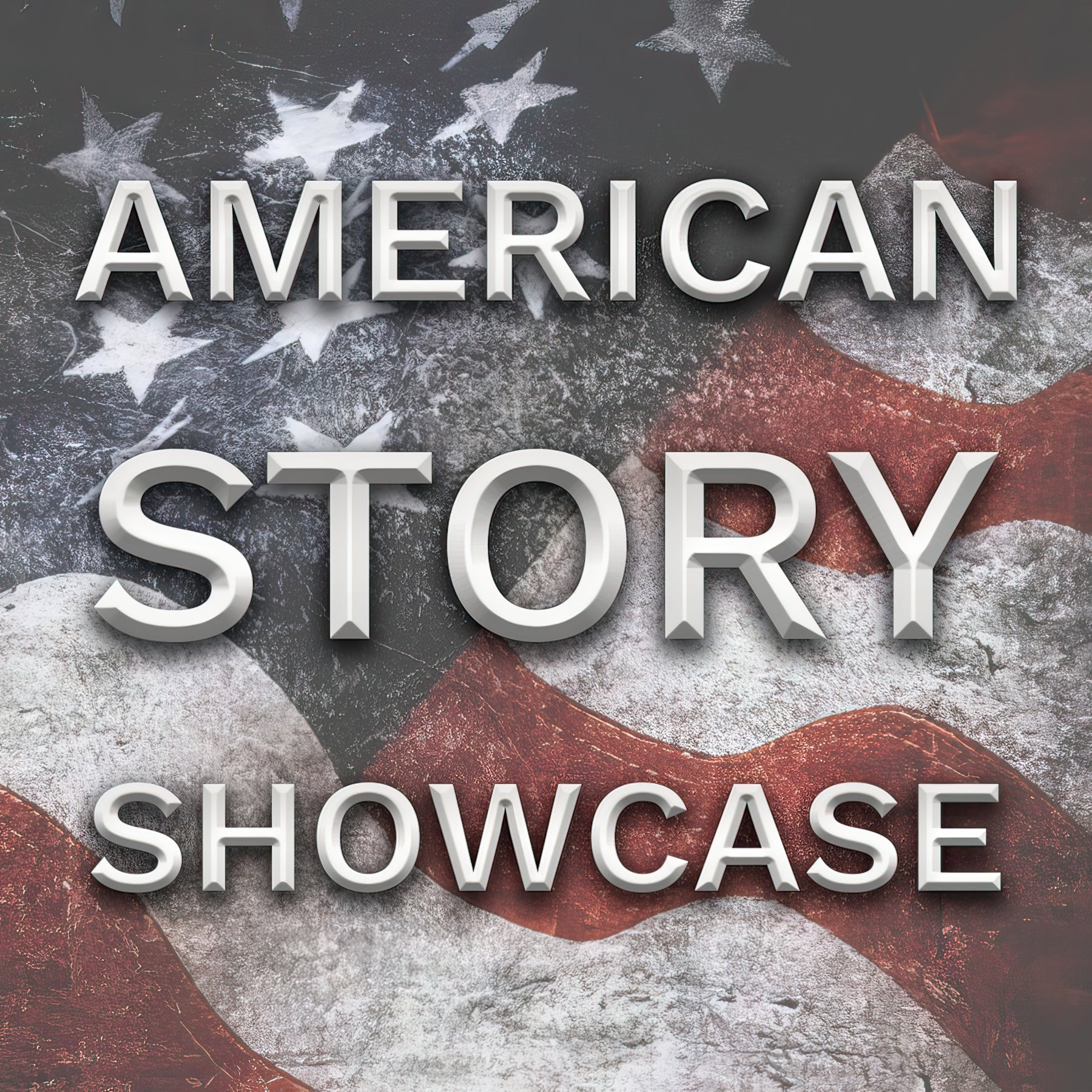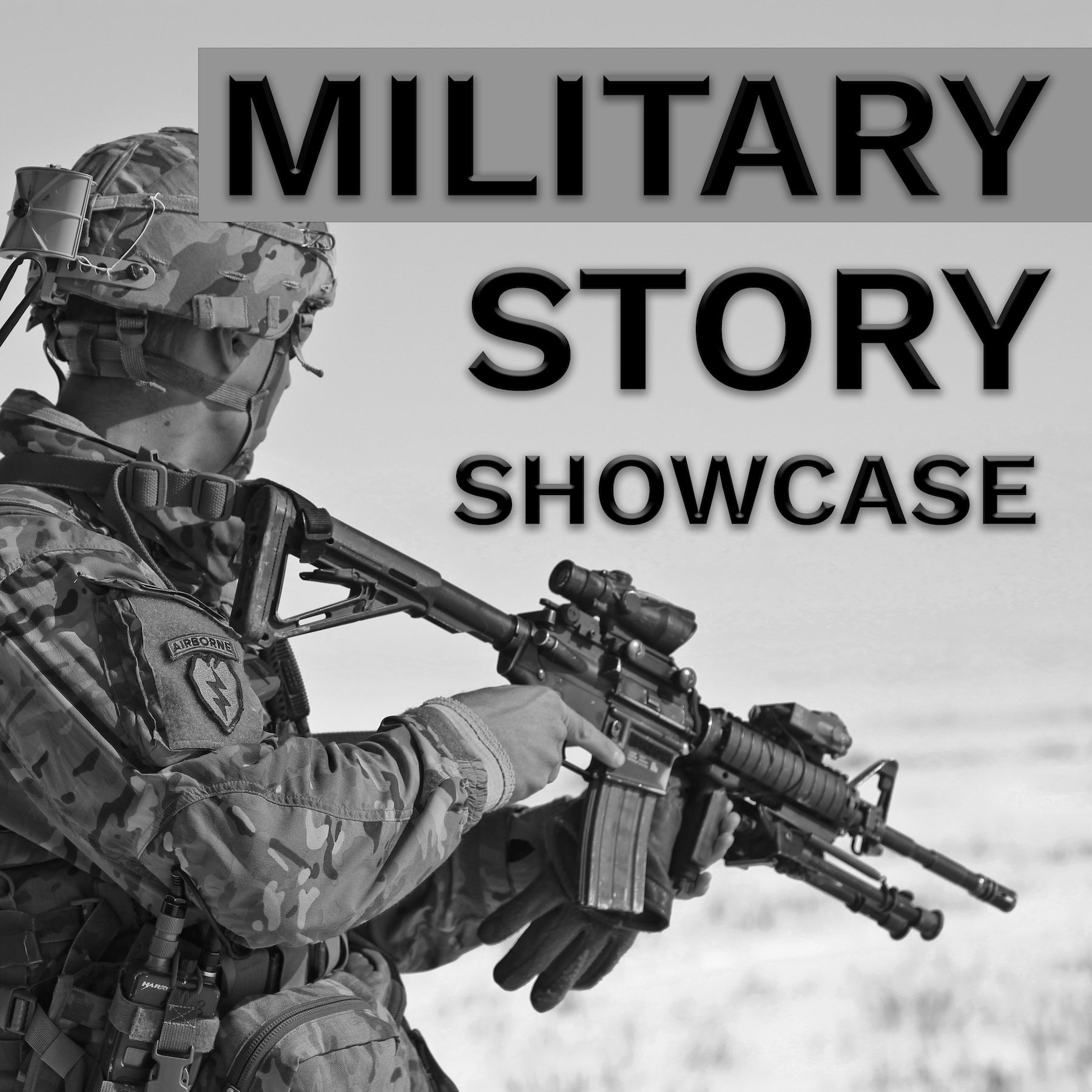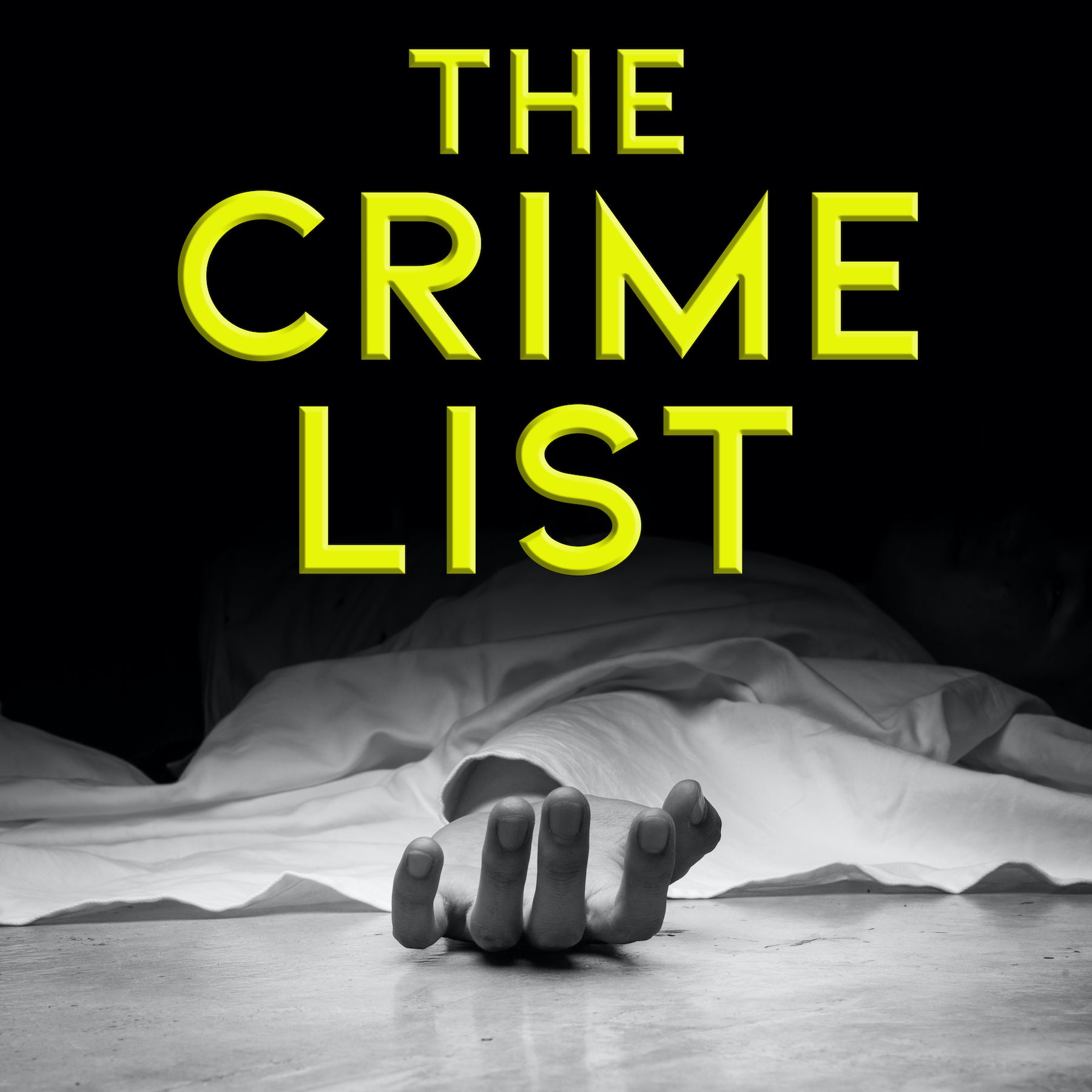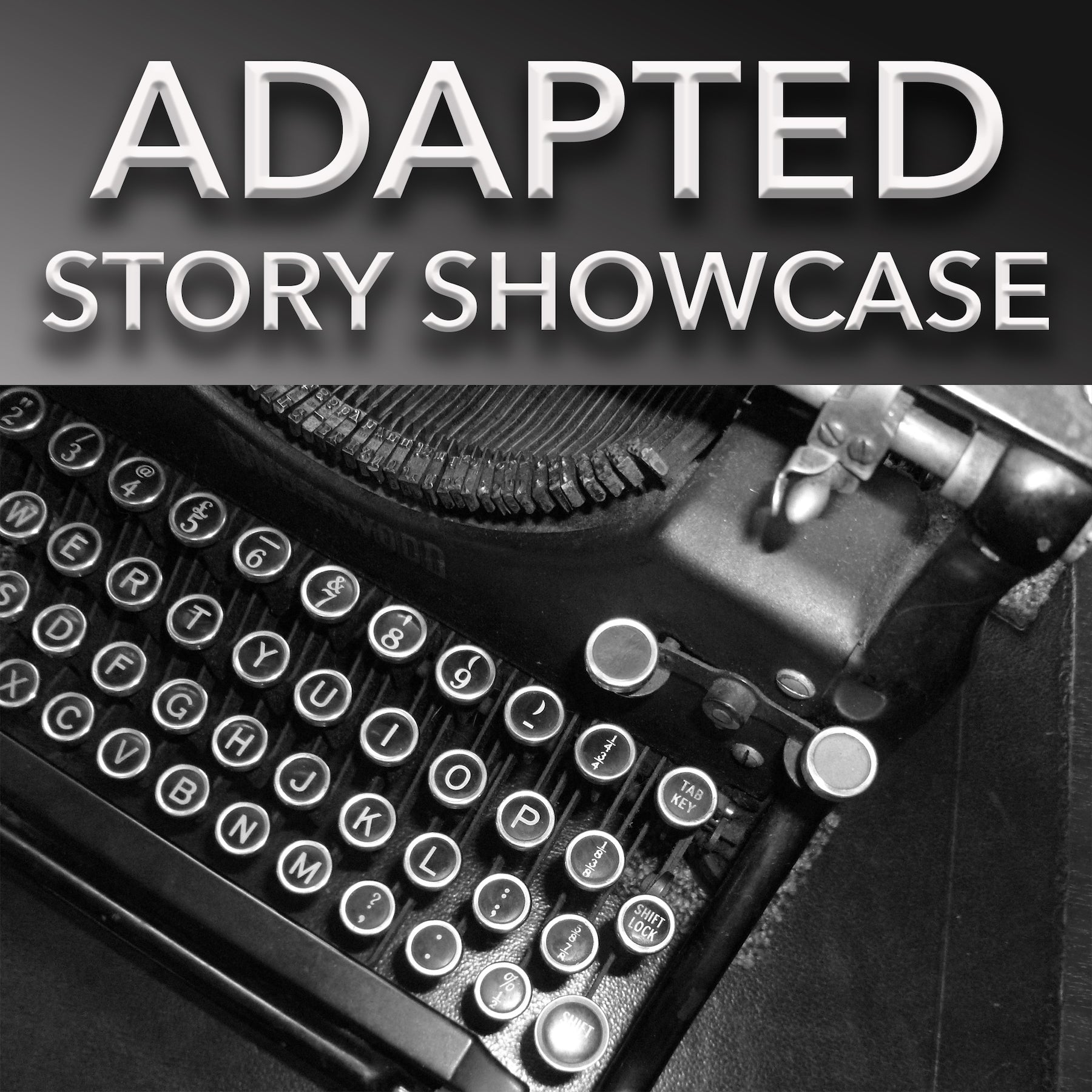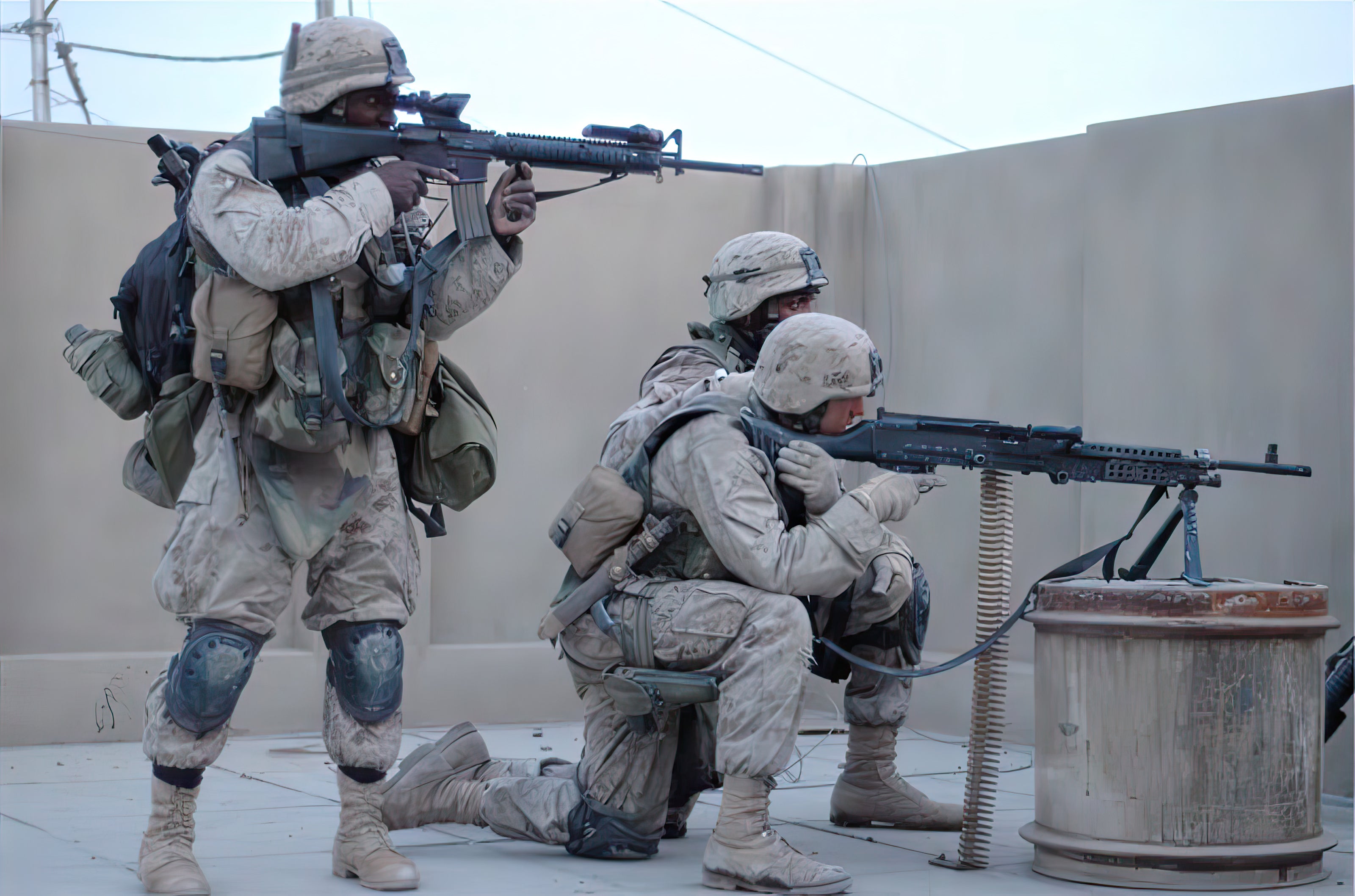
Battlefield Fallujah - Episode 7: The Marine Corps Birthday (November 10, 2004)
In RCT-1s zone, four battalions converge in one area and attack in different directions with 3/5 facing heavy fighting. Meanwhile, RCT-7 encounters strong resistance as they push rapidly south, and warriors from David Bellavia's 2-2 get trapped while clearing a house.
November 10, 2004 was the Marine Corps' 229th birthday. The Marine Corps traces its lineage back to the Revolutionary War, where legend has it that its first recruits were enlisted at a bistro named Tun Tavern in the city of Philadelphia. In 1921, John Lejeune published an order that made November 10 the official anniversary day, and since that time, Marines all over the world—“in every clime and place”—take time to honor those men who have “borne the title United States Marine.” Despite the fighting, Marines took time out to observe the Corps’ birthday.
Colonel Mike Shupp remembered holding a short ceremony: "We did the birthday ceremony inside of the apartment complex in the stairwell. Sergeant Major read General Lejeune's message. I read the Commandant’s message, and that’s where we had our cake ceremony, inside there."
Each Marine received a small piece of rum cake, courtesy of the regimental executive officer’s sister, who had sent it just in time for the birthday. One company commander kept his birthday wish to his hard-fighting men short.
Major Marshall Bourgeois with 3/5 Kilo Company: "On the Marine Corps birthday, the morning of, the company commander said, ‘Marines, treat them with honor, then kill ‘em, then kill ‘em again. Happy Birthday.’"
Colonel Shupp’s adjutant, 1st Lt. Anthony King, broadcast the regiment’s battle honors over the radio. Army psychological units took it upon themselves to blare the “Marines’ Hymn” throughout the city.
REGIMENTAL COMBAT TEAM 1
At this point in the operation, the regimental fire-support coordination center (FSCC) had an extremely difficult and complex task. Four battalions were converging on one area and attacking or blocking in different directions. The regiment noted, “The FSCC employed a Fire Support Coordinator (FSC), an assistant and two or three air officers 24-hours a day, just to keep up with the supporting arms requirements.”
As the regiment advanced further into the city, it brought the 4th Battalion, Iraqi Security Forces, into play.
Colonel Shupp: "The Iraqi Forces came in and they had a very limited area. We were concerned about accidental discharges and friendly fire. So, we had to really control their areas where they were gonna be fighting in. The Army support teams and Marines that were with them, really had their work cut out. So, the regimental staff marched them down into the battle. And true enough, they had their accidental discharges and wild firings as we were going down. One of their sergeant majors actually shot himself in the foot, and had to be evacuated. But they got into the city and seated and started working fine."
The regiment continued its attack: "The plan of the penetration was to try to get as deep as we possibly could to get behind the IED fires, the igniters, the detonators, the people that were gonna hit us in the flanks. Get behind them, and once behind them, then we would be able to seize our objectives, disrupt their defenses, and then try to pull ‘em back. So, now I have a three prong attack against the enemy, with 2/7 coming down towards the bridges, 3/1 going east to west across Henry in the middle of the Jolan, aiming on the Kabir Mosque, and 3/5 coming down the north—the river road, the north-south access, with 4th IIF screening to the east to prevent any leakers from 7th Marine’s zone coming across and 1st IIF searching houses, house to house, in the north."
3rd Battalion, 1st Marines
At first light, Kilo Company prepared to seize the al-Kabir Mosque complex, regimental objective Delta, which consisted of the worship building and a large dormitory. Lima Company conducted a supporting attack on the water-treatment plant just to the north, while India Company attacked to seize dominant terrain along the river.
Lance Corporal Justin Boswood was with Kilo Company: "The biggest mosque there in town, over on the Euphrates, to take, was our company objective, and was also battalion and division objective. Our platoon was main effort for our company and then my squad was main effort for that. So, we were taking down the mosque, and that’s what we were approaching to, and they told us before we got there, that it would take seven to ten days to get there. And we went through so many houses and so many streets, just pushing to meet the objective as soon as we could. And we could’ve taken it our first night there, we were there, walked within maybe 250 meters of it.
We could’ve took it, but we had to wait for people on all sides, the different battalions and whatnot, to catch up. They were running into stiff resistance on all sides, like we had, and we just kind of pushed through a little faster than they did, so we held for about a day, and then we went and took the mosque, which is supposed to be a huge strong point for a terrorist, and we found weapons caches. But, by the time we got there, everybody had left, and they’d run out the back door and they were getting shot up by our buddies on the other side. We were able to catch at least some of them with some good gunfire."
1st Lieutenant John Jacobs was platoon commander, 2nd Platoon, Kilo Company: "Morning started off with a pretty good prep on the mosque. We’d been told, prior to coming in, that the mosque was probably one of the largest weapons caches in the city. As soon as the sun came up, they started hitting the area around the mosque with artillery, and they dropped two 500-pound bombs on the mosque. The mosque itself, the actual worship building, was in the southern portion of the complex, and then there was a large dormitory complex. And, it was the dormitory that was destroyed by the aircraft and the artillery. The actual worship building was left untouched.
My platoon took down a school on the eastern side of the mosque to use as a support by fire position for our assault on the mosque. That school was taken down by our third squad. Once the school was taken down, the support by fire was set up. Our first squad made entry into the mosque, and it was pretty anti-climactic. There was no resistance in the mosque. Found some RPGs and things like that inside. But the actual, the big weapons cache that was supposed to be there, never materialized. Could’ve been there, but the building got hit with two 500-pound bombs, so it was just a pile of concrete rubble. So, there was no way for us to really tell what was in there, lying beneath tons of rubble."
3/1 Commander, Lieutenant Colonel Willard Buhl: "Remarkably, we had air strikes on the Kabir Mosque, we destroyed the outbuildings with GBUs. No damage, very little or no damage to the mosque. Little pieces of shards of tile and stuff off of it, but the mosque, itself, completely intact, and these outbuildings, which were full of explosives, and weapons, and people, destroyed."
As the company consolidated, their mortar section came under small-arms fire from three insurgents, who were subsequently killed.
Lieutenant Colonel Buhl and Major Griffin were following in trace of Kilo. Major Griffin recalled: “It was obvious that the company was in significant contact... You could hear it and see RPGs streak from a high level on one building, shooting down at a sharp angle into the urban canyon that Kilo was in.” The company’s attached tanks took it on the chin. Some tanks were disabled... Kilo Company quickly returned fire and knocked out the enemy positions, but it took a couple of hours to fight through the ambush. The slow movement had an effect on the rest of the battalion. According to Major Griffin: “Because Lima Company was behind Kilo, it got stalled. Captain [James] Heatherman, rather than just sit there, started detailed clearing the area around him... and that’s when he started to take heavy casualties.”
At the end of the day, India and Kilo Companies were abreast of Jolan Park, with Lima Company in position behind them.
2nd Battalion, 7th Cavalry
A day and a half into the fight, Lieutenant Colonel James Rainey’s mechanized battalion had seized its day-two objective, and considered whether they should hold what they had during the daytime and wait for another night. Rainey called Col Shupp and posed the question. Col Shupp responded with, “Continue the attack!” Rainey decided to have Capt. Edward Twaddell’s Alpha Company, 2-7 Cavalry, conduct two platoon-sized attacks against the day’s objectives.
Captain Twaddell received the orders to conduct the attack west toward the Euphrates bridges, which Rainey designated objectives Kentucky and Ohio. His lead elements moved out at 0900 against light resistance and reached the southern bridge, Kentucky, without further incident. An attached SEAL team checked the bridge for IEDs. Alpha Company continued toward objective Ohio, “and encountered the same type of resistance, 10 to 15 guys trying to make some impassioned last stand, that lasted all of about three to four minutes."
Lieutenant Colonel James Rainey described the types of fighters 2-7 was encountering: "[It] really runs the full gamut. There's some very unprofessional fanatical-type fighters towards the outer sides of the city, ranging all the way to some, what I would call, professional well-equipped foreign fighters that have capabilities that are greater than Task Force 2-7 had seen, say, in the battle for Najaf or day-to-day operations in and around Baghdad."
Having completed the mission, Alpha 2-7 went firm for the night. Rainey noted that 2-7’s disposition at the end of the day was, “Apache down by Ohio and Kentucky in overwatch. We’ve got Cougar screening along Phase Line Fran and the southern road that runs from Henry to objective Kentucky. Comanche has got Phase Line Henry from Fran back to the train station secured.”
3rd Battalion, 5th Marines
Lieutenant Colonel Malay’s battalion moved into the Jolan, searching for weapons and explosives caches.
Major Bourgeois with Kilo Company remembered the 10th as the day that 3/5 was involved in some of the heaviest fighting: “On the 10th, which was the Marine Corps birthday, this is the day we started the heaviest fighting. It slowed us down a lot because there were numerous pockets of insurgents held up in buildings. Right from the beginning, there were like six or seven Marines that were injured, shot.”
Late in the afternoon, Kilo Company started crossing an open area near a mosque, when they were fired upon by snipers barricaded in two buildings. The company sent a squad against the western building. As they moved toward the house, the insurgents threw several hand grenades, wounding two of the Marines. A sniper wounded another, as the remaining members of the squad rushed the building, killing the four insurgents inside.
Bourgeois was close by: “Part of my job there, I’m also a paramedic, so I told the company commander, I said, if anybody’s hurt, I will go to wherever they are hurt. And so, I found myself going and helping out numerous individuals that were shot in the leg or foot, hand, whatever. And one platoon, 3rd Platoon, in particular, several Marines, some of their leaders, sergeants and corporals were injured. I carried, physically carried, several Marines to awaiting HMMWVs, and then in one particular case, I carried—his name is Corporal <unknown name> was shot in the leg, helped carry him to the Humvie, and took off and then come back and there’s a severe fire fight in the building. I was standing in there basically firing at an area where this fire was coming—and heavy volume; automatic weapons fire, but it wasn’t shooting at anybody in particular, they were just like shooting down alleys. So, Marines were off station firing back, throwing grenades and so forth. So, I try to get a better vantage point and I looked up and I saw the company commander and all the SEALS up on a particular rooftop. So, I said, ‘Well, this is probably the place to be.’
So, I went up there. And then, five minutes later, I see a stretcher being carried. As soon as the first Marine was brought out on the stretcher, I heard the ranger say, ‘Wait two of ‘em got up, two of ‘em got on the roof. Two bad guys on the roof.’ So, one got away, for some reason. He had a bad angle or something, and—there were four of us up there. There was a SEAL, a ranger, radio operator, and myself, and we saw an AK-47 got thrown over the top of the roof, over to an adjacent building. And the ranger was—he said, ‘Okay, you know where he’s going. Everyone just aim for that one particular area.’ And as soon as that other guy brought his little head up and body, all four of us shot at once and he dropped like a ton of bricks.”
Another squad moved against a two-story house that was surrounded by a brick-enclosed courtyard. Sergeant Jeffrey Kirk led an assault team to the gate and prepared to enter the house. Private First Class Christopher Adlesperger kicked it open, and the team rushed into the house. The first man was killed in a burst of insurgent machine gun fire and three others were wounded. The Navy Cross citation stated, “Adlesperger immediately attacked the enemy with rifle fire. While doing so he suffered a fragmentation wound from enemy grenades. [He] single-handedly cleared stairs and a rooftop to move the injured to a rooftop where they could receive medical attention. On his own initiative... he established a series of firing positions and attacked the enemy... disregarding his own wounds and physical exhaustion... he demanded to take the point for a final assault [and] was the first Marine to re-enter the courtyard where he eliminated a remaining insurgent at close range.” (Newly promoted Lance Corporal Adlesperger was subsequently killed in action on December 2, 2004 while leading his men on another clearing operation.)
As Adlesperger fought inside, Sgt Kirk led two assaults into the building in a rescue attempt. The rescuers were forced to withdraw under heavy insurgent fire. Kirk’s Silver Star citation noted: In one of the attempts, Kirk, “although wounded as he approached the position, continued to attack by throwing a grenade into the room and then eliminating the enemy machine gunner with a rifle.” He regrouped his men, and after “refusing medical attention he remained as the point man and led the Marines in for a third assault. He quickly overwhelmed and destroyed the remaining insurgents, clearing the building to the roof.” (Sergeant Kirk returned to duty after recovering from his wounds but was killed in action on December 12, 2004 while leading his men on another clearing operation.)
At this time, Major Bourgeois went back down to the street, just in time to see the company commander lead a squad into a house to rescue a wounded Marine: “These two Marines tried to break in the door and were met with automatic weapons fire. One was hit and was actually left in the building, and this other guy was outside the building, was dragged away by other Marines, and that’s the Marine I saw that was evacuated. So, we had a Marine inside with 11 insurgents that were inside this one house. So, he’s there by himself, wounded, in the house with them. So, Captain McNulty, after hearing this, finding out what was going on, got together a squad, they all put on gas masks, and I got there right at that point, as he said, ‘put on your gas masks’. So, I didn’t know what was going on. I started putting on my gas mask and after I realized what he was gonna do, was he was gonna take a smoke grenade... It’s a smoke grenade that produces a lot of heat. So, he was gonna use one of those and try to smoke these guys out of there.
So, he went in there with a squad, and heavy volume of automatic weapons fire was going in front of him, and he’s sneaking up along this side; threw in a couple of grenades, and bust open the door, big fire fight, you know, and then next thing I know, [sighs] a stretcher is coming up right next to me. So, I go along with them. Go to where this other Marine was, helped them drag a Marine out of the rubble. I roll him over and his whole right side of his face is gone. I’m looking deep into his skull. I knew he was dead at that point, but I looked down, and all his intestines were charred, hanging outside of his body, and all of his—both of his legs were shredded beyond recognition. They were just—they were just flappin’. So, all of a sudden, as soon as I rolled him over, a couple of Marines saw that and they were visibly and audibly upset. So, me and the company commander were there and the SEAL came over there. He said, ‘Hey, look guys, he’s dead, let’s go’, because it still wasn’t secure, and we didn’t know who was around us. So we threw a poncho over him, loaded him on the vehicle, and the Marines brought him back to the rear.”
A search party discovered nine dead Iraqis and several weapons in the house.
Major Bourgeois: “There were nine dead Iraqis and a bunch of weapons. Four of ‘em were burnt, virtually, alive, because they had no clothes on ‘em still, and they were positioned in ways where you knew they tried to get out of this little room they were in, but they couldn’t. And the other guys were shot or grenaded, or whatever, but they were all dead. All wearing their Mujahideen garb, the beards … the whole nine yards, so. And then, after that, everybody was pretty much visibly shaken, though we still had to go continue on in the fight. So, we continued clearing buildings; small fire fights here and there. And, a couple other Marines were wounded that day, as well. So, that was probably the worst day that we had as far as injuries. We had that one KIA. And that was on the Marine Corps birthday.”
As 3/5 continued to sweep the area, they discovered evidence of torture and execution.
Major Bourgeois witnessed the gruesome sight where animals were eating the flesh of the dead: “There were several dead bodies all over the place. Iraqi dead bodies that were shot in the face and/or shot in the back of the head. Their feet cut off, heads cut off. Severed. Some of them were covered. One I uncovered and it looked like he had a—one of those suicide vests on, wasn’t wired luckily. So, we evacuated the building. They were definitely executed. And a lot of their faces were not only shot off, but all the meat and tissue were not there as well. And we saw animals eating the flesh, so now I know why a lot of the flesh wasn’t there. So, they’d been there for more than just a couple days, these particular guys. And some were fresher than others, as far as the kills go. But, you could tell by the smell how long they were there.”
The battalion also discovered an execution chamber.
Bourgeois was present on discovery: “We found what they’ve termed an execution chamber. It was the Iraqi Police captain’s home. He also had pictures of his little girl who was dressed up like in her Sunday dress, and holding a handgun to her head as if she was gonna commit suicide with a big smile on her face. So, this individual was a sicko. Normal looking home until you opened up one door, and there were three cells in there; actual metal cells, with dirt floors, and there was one freshly killed individual in the first cell, bullet wound to his face—or to his head, and fresh blood in there. His feet were cut off. And then you went into another one, and there were actually two living individuals who were extremely emaciated and they looked to be—I don’t want to say retarded, but they were malnourished to the point where it effected their brain activity, ‘cause they were just acting strange. And then, in the farthest cell, which we didn’t unlock, there was another individual who was apparently shot, because he was laying face down.”
Later that day, the battalion located the missing driver for two kidnapped French reporters. He was taken to the battalion aid station, treated, and questioned about other hostages he might know about.
REGIMENTAL COMBAT TEAM 7
The rapid advance of both regiments to Phase Line Fran (Highway 10) had changed RCT-7’s initial plan. Instead of clearing the entire southern section of the city, it would continue pushing south within the same boundaries and phase lines already in use. It was decided that one battalion of the regiment would remain behind and assist the Iraqis in clearing the northern part of the city. The 1st Battalion, 3rd Marines, drew the assignment.
1st Battalion, 3rd Marines
1/3 commenced detailed clearing of buildings in its zone. As a squad from Charlie Company was clearing a house, they were suddenly taken under fire from the second floor. It was Captain Tennant’s 2nd Platoon under Lt. Dustin Shumney. Captain Tennant stated: “They searched the first floor without incident... but as soon as they tried to get up the stairs to the second floor, they received heavy small arms and machine gun fire. Six Marines were wounded and trapped on the first floor. Lance Cpl. Aaron Pickering was seen to fall on the floor above and was presumed dead.”
The situation was becoming desperate. Lieutenant Shumney reported that the insurgents were firing armor-piercing rounds through the floor among the trapped Marines. Tennant ordered another squad to assist. “As the squad reached the building... they breached the door. The second man in the stack, Hospital Corpsman 3rd Class Julian Woods took two steps inside and was struck in the head, mortally wounding him.” Sergeant Kristopher Kane, according to the Silver Star citation, “entered the building amidst a hail of enemy armor piercing rounds fired at him through the ceiling and dodged hand grenades that were tossed down the stairs.”
He spotted several wounded Marines and placed himself to provide covering fire while others pulled them out of the building. As luck would have it, an engineer team with a D9 bulldozer showed up at the company command post. Captain Tennant directed it to knock a hole in the building so the trapped Marines could escape.” Sergeant Kane “held his ground, in the direct line of enemy fire, even as a D9 bulldozer... began collapsing the building around him.” As the last of the wounded were pulled out, a portion of the wall fell on Kane, crushing his leg. As the bulldozer collapsed the building, the operator killed two insurgents, including one he knocked down with the blade and then ran over.
Captain Brian Mulvihill and his Iraqi soldiers were working with Alpha Company in an area of run-down abandoned buildings: “They set up a CP there. Essentially, it was a series of positions from which they could move out throughout that area, and start clearing buildings, houses and garages.”
His men started searching structures: “So, we began summarily searching, block-by-block. Every fourth or fifth garage [we discovered] munitions, stockpiled... ready for something."
1st Battalion, 8th Marines
Lieutenant Colonel Nicholas Vuckovitch. RCT-7's Operations Officer: "1/8 probably had the preponderance of the enemy in their zone, no doubt in my mind, particularly down towards the Mayor’s Complex, and then just south of Michigan, which appeared to be the main line of resistance at that point."
At 0400, Captain Aaron Cunningham’s Alpha Company became the main effort for the battalion. They loaded into AMTRACs and headed south. The column was led by three Marine tanks from Alpha Company, 2nd Tank Battalion, under the command of 2nd Lt. Jeffrey Lee. The company reached the complex without incident within 15 to 20 minutes of crossing the LD, and immediately executed Cunningham’s plan to make two breaches in the outer wall. Lee’s tanks blew two gaps in the masonry with their 120 mm main guns and shouldered their way through the breach, followed by the AAVs.
1st Lt. John Flanagan: “We immediately moved in, started taking the individual buildings within the Mayor's Compound utilizing SMAWs to breach the walls to get into the buildings and clear them.”
The 1st Platoon took the buildings on the right, 2nd Platoon took the left, while 3rd Platoon covered the rear. There was no opposition. The complex was empty, although a large cache of mortar rounds and RPGs was discovered. By 0600, the complex had been searched and cleared.
However, that quickly changed, according to Major Mark Winn, the battalion executive officer: “As soon as the sun came up, all hell broke loose around here. There was small arms fire [and] RPG fire from all directions here.”
The company took cover in the masonry buildings and returned fire. Fortunately, the concrete structures protected the Marines from the hail of mortar and RPG fire.
By 0830 Alpha Company moved into a high-rise building.
1st Lt. Flanagan: "The reason for taking the high-rise was because it was one of the highest buildings within the central location of the city. We wanted to have a full view of the city so that we could direct our artillery mortar, as well as our close air support. So, we're looking to make that our initial COC for Alpha Company 1/8. We spent a couple hours just trying to set up our security. There was a SEAL Team as well, that was in the building, providing for encounter sniper operations."
1st Lt. Flanagan came under fire on the fourth floor: "I was in the room by myself and a sniper round came pretty close to my head and ricocheted off the wall behind me to my left, then hit the back wall, and the round, still glowing red, slid on the floor in front of the window where I was standing. Startled me, of course, and I jumped out of that room as quickly as I could. We crawled back in there on our bellies, and I showed them [the other Marines] the impact so we could get a gage of the trajectory, possibly where he's shooting from. At one point, one of the Marines, who was trying to get eyes on the sniper and take some shots at him, was actually pinned down and we actually had to pull him out by his feet 'cause he didn't want to raise his head up and be in view of the sniper."
Inside the exposed courtyard, Lee’s tanks took the insurgent positions under fire. At one point, Lee dismounted from the turret to retrieve .50-caliber ammunition and was shot in the right arm. One of his crewman wrapped the wound with all-purpose duct tape and, according to the Silver Star citation, “refusing medical attention, Lee continued to fight the enemy... his aggressiveness and bravery... were critical to the success of the company.”
The fire-support team on the high-rise roof tried to spot the enemy positions. The men started taking precision shots. A round barely missed Lieutenant Malcolm. Captain Cunningham thought the round actually ricocheted off his helmet. He ordered the men off the roof because it was too dangerous. They quickly cleared the roof, except for Malcolm, who turned back to get his pack.
1st Lt. Flanagan: “So, Lieutenant Malcolm went back outside [and] picked up his pack. As he turned the corner and came back through the doorway, we heard the shot and just kind of saw the look on his face. He just started to fall forward. Trajectory came up, caught him in the right side. And, actually, the SAPI plate stopped it, and the round was still inside his chest, protruding, slightly."
Two corpsmen immediately started working on him: “When they brought Lt. Malcolm down on the stretcher, his skin was just pale white. He’d lost all coloring. It was already very shallow breathing. I remember hearing the SEAL Team corpsman, who was working on him, yelling for him to stay with him."
Lt. Malcolm was evacuated and succumbed to the wound.
1st Lt. Flanagan: “Once that incident happened, it really put a different perspective on everything. And, for the next 24 hours, our sole purpose was to try to find that sniper. We had a gun ship out all night.”
While Alpha Company battled the snipers, Bravo Company attacked down Route Ethan. Two blocks into the assault, multiple snipers and machine gun fire pinned down the company.
Staff Sergeant Christopher Jewell, 2nd Force Recon, Team Leader, Team 2, was on a rooftop not far away: "The morning of the 10th, we moved over to that mosque. Once we got to the mosque there, me and my ATL, which are snipers, and one spotter, and 'Frisky' [Major David Morris] our FAC, went up on the rooftop of that mosque to engage targets of opportunity. We had that thing secured. And, we had a sniper team, which was the first from Team 1, which was their team leader [Staff Sergeant Mark Detrick], we had him located in the minaret. And then me and Staff Sergeant Olson were sniping from the rooftop.
I had located four or five enemy personnel, which were Muj, down to the southwest, probably about 650-yards. All we could see was their heads. I sit there and observe them for a few minutes. Got range on them, and I decided to go ahead and take a shot. And, it was a pretty tough shot. It was a moving target. He was moving back. He had a fence between him and I. About 650-yards. All I could see was his head. I took a shot on his head, and I probably hit three or four-inches behind him. And, he ducked. And, at that time, they started scattering like roaches when the lights come on. We called in 81s, at that time, and we just blew the shit out of the area, which there's no doubt we killed 'em."
It took Bravo Company until after dark to start moving again. Meanwhile, Charlie Company came under attack while making their way down Route Ethan to seize a mosque on Phase Line Fran.
Captain Theodore Bethea, company commander: "At about 1230 on the 10th of November, we received orders to attack to seize a mosque on Fran. Once again, we had a force of approximately 300 personnel consisting of Iraqis, Force Recon, Charlie Company, engineers, reporters, interpreters - very, very large force. And we conducted our attack at approximately 1430 down Route Ethan to seize the mosque on Fran. Approximately one block into the attack, the company was pinned down by multiple positions of sniper and machine gun fire. And, we continued to locate and destroy the snipers, however, we continued to receive accurate sniper fire where we took a casualty and employed the tank to try to destroy the sniper positions, but we could not neutralize them.
We then also began taking sniper fire from our rear as well. At this time, the tanks became critically low on fuel and ammo. So, at that point, I made the call to send the tanks back to get a fresh combat load of gas and ammo, so that we could then continue the attack to seize this mosque. I made that call at 1630 after fighting against these snipers and machine gun positions for approximately two-and-a-half hours and not being able to destroy them. So, we brought the company in. We re-cocked. We waited for the tanks to come back gassed up, and then it was now during the hours of darkness. And now that it was during the hours of darkness, the Iraqis said they had to be mech-ed up in order to seize the mosque. So, that became a friction point because we were conducting this as a dismounted attack. So, I reported this to Battalion. The Battalion sent me tracs so I could mech up the Iraqi Forces. Once we got the tracs, we inserted our reconnaissance element. However, we did not go down our route to insert the recon element because the Colonel told me that we could not put tracs down our avenue of attack, it would be an RPG threat.
As a result of that, we brought the tracs toward the vicinity of this compound that Alpha [Company] had secured, and deployed the Force Recon Marines from the vicinity of this compound, staying off of the route that we were told not to take tracs down. Once the tracs rejoined us, I had tracks stay at the Hydra Mosque, as well as with the Iraqis. So, therefore, I could just fight my company at night to get down to secure the outer areas of the mosque. That was an extensive effort because we literally cleared every house immediately across the street from the mosque... as well as the second row back. And Force Recon cleared the entire building - the highest building overlooking the mosque on Fran. Once we conducted that mission, we took several hours because of the extensive breaching we needed to do to get into all these homes. All of them were locked up. Almost every one of them required an explosive breach in order to make entry.
Once we had deployed our 1st Platoon, our 2nd Platoon, and our 3rd Platoon, and we had cleared all the outer built-up area around the mosque, I then ordered the Iraqis to get on the tracs. The Iraqis then came via the route we had just cleared to the mosque. The tanks, prior to getting rearmed and refitted, actually backed into several walls on the outer perimeter of the mosque in order to make breaches for the Iraqis. Iraqis drove right up to the breach points in the mosque. Got out of the tracs and then attacked to seize the very large mosque on Fran."
The Iraqis found caches of weapons and ammunition, which under the Law of War caused the mosque to lose its protected status. During Operation Phantom Fury, 60 mosques—three out of every five—were found to have weapons caches or fighting positions. Bravo Company spent the remainder of the night in the mosque. Charlie remained in the Mayor’s Complex.
2nd Battalion, 2nd Infantry
Captain Jeffrey Beauchamp, RCT-7's Army Liaison Officer: "The industrial area, south of Fran, had warehouses, garages, wasn’t as residential, obviously. We found more enemy resistance down there, and that’s where the bunker complex was... spider holes... found lots of caches. That’s where we came across a preponderance of foreign fighters, guys with the Jordanian passports, Palestinian ID cards, Syrian [and] Iran."
The BRT was a few hundred meters south of Phase Line Fran when Captain Neil Prakash heard that Outlaw 1 (Boggiano) was in contact. Prakash pushed forward to help out.
On the evening of the 10th, Staff Sgt. David Bellavia’s dismounted squad was fired on from a house by several insurgents. His company commander, Captain Doug Walter, said, “The squad cordoned off the block of about 10 to 13 buildings. They began clearing each house, trying to find out where the guys were who had shot at them.” Staff Sgt. Colin Fitts led his men into one of the houses and, as they were about to enter the second room of the house, “they were engaged by a couple of insurgents who were hiding behind a concrete barrier. The location of the insurgents prevented the men from either advancing or pulling out. They were trapped. “Rounds started penetrating the wall they were taking cover behind. One bullet went through a flak vest and grazed the side of one of the men. Staff Sergeant Bellavia was close enough to see “fire coming from everywhere." One of Fitts’ men was hit.
Captain Walter said that “Bellavia picked up a squad automatic weapon... stepped into the doorway and suppressed the insurgents long enough for the squad to break contact.” A Bradley moved forward and pounded the building with 25mm rounds, but its fire was ineffectual. Staff Sgt Bellavia decided to “soften the insurgents up", stating, “I’m going to go in there like a banshee, I’m going to throw grenades, I’m going to make a loud noise, they’re going to run out of the house and my guys are going to shoot them.” Just before going in, Specialist Lawson stepped up and told Bellavia, “I’m not going to let you go in there and die alone.” Bellavia acknowledged with a simple, “You coming?” and led the way into the house.
Inside the house, Bellavia says “I put my head down to peer around the corner and this barrage of fire, accurate as all get out, takes a shot at the base of the wall. Bullet holes everywhere. I’m bleeding from my face, Lawson’s bleeding from his face [and] my knuckles are red.” Bellavia spotted an insurgent preparing to fire an RPG. “I was completely fatalistic,” he said. “I turned the corner... squeezing my M-16 and the RPG guy just dropped.” Another insurgent fired and missed. “His first burst was really left, long and high.” Bellavia did not miss and wounded him. Suddenly, he heard an insurgent’s flip-flops on the stairs. Walter reported, “A third insurgent was in a closet... and came bursting out, firing wildly.” In the exchange of fire, the insurgent was wounded but managed to flee up a flight of stairs. Bellavia followed, threw a grenade into a room at the head of the stairs, and wounded another insurgent, who fell at his feet. “I’m swinging my rifle to whack him in the head,” Bellavia said. “I make contact with him a couple of times... and he hit me with something metallic... cracked my tooth.”
Bellavia took off his helmet and bashed the insurgent on the head, putting the man down. The two struggled and Bellavia’s knife slid off his belt and landed on the floor next to the insurgent. Bellavia picked it up and killed the man. Exhausted, bleeding, and “scared to death,” he staggered out of the building, just as an insurgent fell at his feet from the third story balcony. Bellavia retrieved an M16 and fired until he was out of ammunition. A reaction squad made contact with Bellavia and hustled him out of the area because an air strike had been called in to demolish the building. Captain Walter said, “Bellavia single-handedly cleared the house, killed four insurgents and probably mortally wounded a fifth.”
For his actions that day, Staff Sergeant David Bellavia was awarded the Medal of Honor on June 25, 2019 in a ceremony that was also attended by former members of his platoon.
Produced and narrated by Laura Cross
Based on the book Operation Phantom Fury: The Assault and Capture of Fallujah, Iraq by Colonel Dick Camp
Special thanks is given to the Department of Defense.
Grateful acknowledgement is made to the U.S. Marine Corps for historical interviews.
Warriors featured in this episode:
Captain Jeffrey Beauchamp, U.S. Army
Captain Theodore Bethea, USMC
Lance Corporal Justin Boswood, USMC
Major Marshall "Rich" Bourgeois, USMC
Lieutenant Colonel Willard Buhl, USMC
1st Lieutenant John Flanagan, USMC
1st Lieutenant John Jacobs, USMC
Staff Sergeant Christopher Jewell, USMC
Captain Brian Mulvihill, USMC
Lieutenant Colonel James Rainey, U.S. Army
Colonel Michael "Mike" Shupp, USMC
Lieutenant Colonel Nicholas Vuckovitch, USMC
Major Mark Winn, USMC
Interviewers: Lieutenant Colonel Timothy Crowley, Chief Warrant Officer William Hutson, Unidentified Reporter for ABC News, Lieutenant Colonel John Way, Captain Joe Winslow


